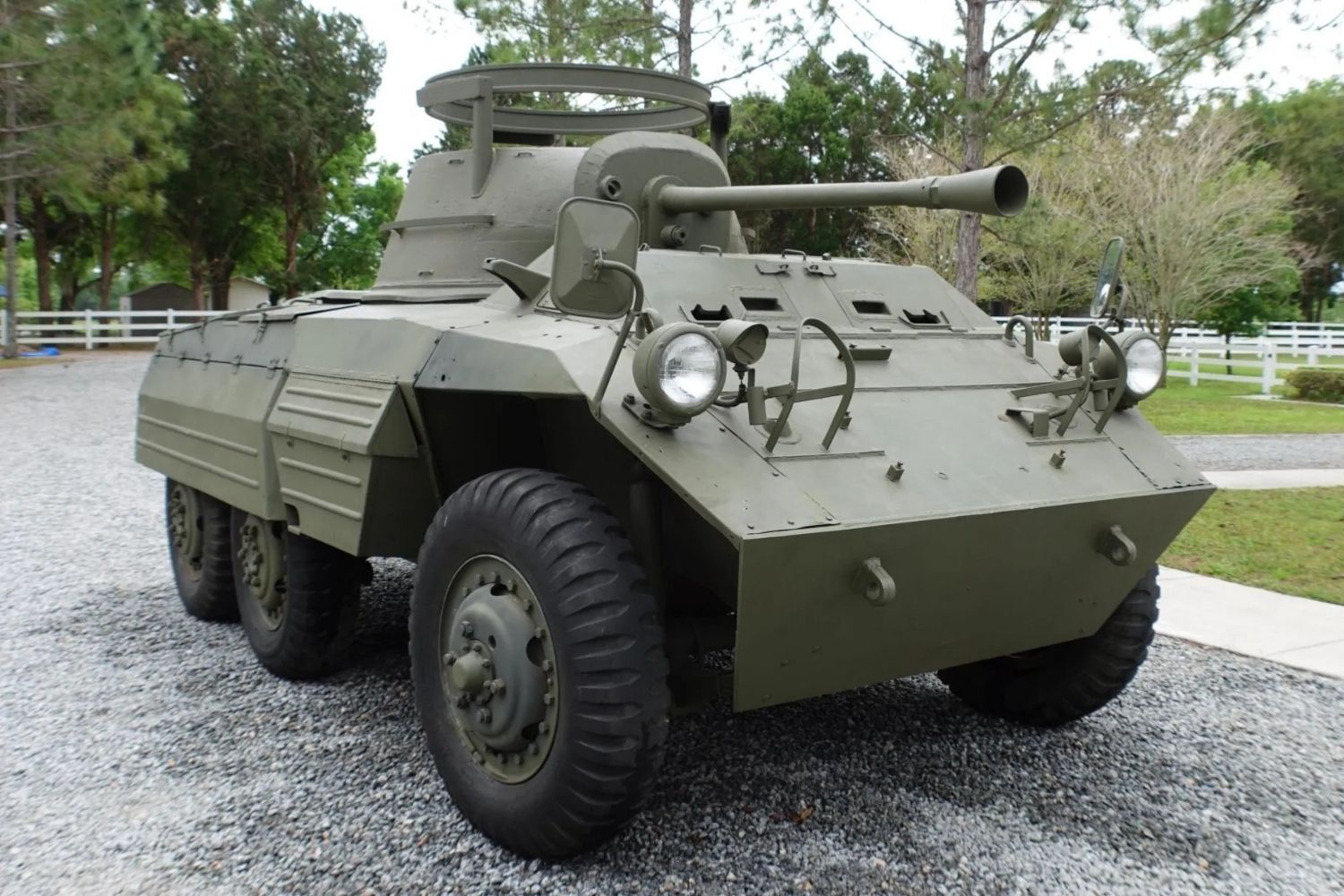
The M8 Greyhound is a light armored car used during World War II. Produced by Ford, it was designed for reconnaissance and equipped with a 37mm gun. This vehicle was known for its speed and versatility on the battlefield. Weighing around 7.8 tons, the Greyhound could reach speeds up to 55 mph. Its six-wheel drive made it effective in various terrains. Used by the U.S. Army, it also saw service in other countries. Despite its light armor, the M8 was valued for its mobility and firepower. Want to learn more? Here are 30 fascinating facts about the M8 Greyhound.
M8 Greyhound: A Brief Overview
The M8 Greyhound, a light armored car, played a significant role during World War II. Known for its speed and versatility, this vehicle was a favorite among reconnaissance units. Let's dive into some fascinating facts about this iconic military machine.
Design and Development
The M8 Greyhound's design and development were crucial to its success. Here are some key points about its creation and features.
- The M8 Greyhound was developed by the Ford Motor Company in 1941.
- It was designed to replace the M3 Scout Car.
- The vehicle was officially adopted by the U.S. Army in 1943.
- Its full name is the Light Armored Car, M8.
- The M8 was nicknamed "Greyhound" by the British Army due to its speed.
Technical Specifications
Understanding the technical aspects of the M8 Greyhound helps appreciate its capabilities. Here are some important details.
- The M8 Greyhound had a 37mm M6 gun as its main armament.
- It also featured a .30 caliber M1919A4 machine gun.
- The vehicle was powered by a Hercules JXD 6-cylinder gasoline engine.
- It had a top speed of 55 mph (88 km/h).
- The M8 had a range of approximately 350 miles (563 km) on a full tank.
Armor and Protection
Despite being a light armored car, the M8 Greyhound offered decent protection for its crew. Let's look at its armor features.
- The M8's armor thickness ranged from 6mm to 19mm.
- It had an open-topped turret, which provided limited protection from above.
- The vehicle's sloped armor helped deflect incoming rounds.
- The crew consisted of four members: a commander, driver, gunner, and assistant driver.
- The M8 was equipped with a smoke generator for concealment.
Operational History
The M8 Greyhound saw extensive use during World War II and beyond. Here are some highlights of its operational history.
- The M8 was first used in combat during the Italian Campaign in 1943.
- It played a significant role in the European Theater of Operations.
- The vehicle was also used in the Pacific Theater, though less frequently.
- After World War II, the M8 saw action in the Korean War.
- Many countries continued to use the M8 Greyhound well into the Cold War era.
Variants and Modifications
The M8 Greyhound had several variants and modifications to suit different needs. Here are some notable examples.
- The M20 Armored Utility Car was a variant without the turret, used for command and reconnaissance.
- The M8 T19 was an experimental version with a 75mm howitzer.
- Some M8s were modified with additional armor plating for increased protection.
- The M8 was also adapted for use as an anti-aircraft vehicle in some instances.
- Various countries made their own modifications to the M8 to suit local requirements.
Legacy and Influence
The M8 Greyhound left a lasting legacy in military history. Here are some ways it influenced future armored vehicles.
- The M8's design inspired the development of later armored cars.
- Its speed and mobility set a standard for future reconnaissance vehicles.
- The M8's success led to the continued use of light armored cars in modern armies.
- Many M8 Greyhounds are preserved in museums and private collections today.
- The vehicle remains a popular subject for military historians and enthusiasts.
The M8 Greyhound's combination of speed, firepower, and versatility made it a valuable asset during its service. Its legacy continues to be remembered and celebrated by military enthusiasts worldwide.
The Legacy of the M8 Greyhound
The M8 Greyhound stands as a testament to innovation and adaptability in military history. Its speed, versatility, and reliability made it a favorite among troops during World War II. With a six-wheeled design and light armor, it could navigate various terrains while providing crucial reconnaissance and support. The Greyhound's .50 caliber machine gun and 37mm cannon offered a balance of firepower and mobility. Even after the war, many countries continued to use the M8, showcasing its enduring value. Collectors and historians today still admire this vehicle for its engineering and historical significance. The M8 Greyhound isn't just a piece of machinery; it's a symbol of ingenuity and resilience that played a pivotal role in shaping modern military tactics. Its legacy lives on, reminding us of the bravery and strategic brilliance of those who operated it.
Was this page helpful?
Our commitment to delivering trustworthy and engaging content is at the heart of what we do. Each fact on our site is contributed by real users like you, bringing a wealth of diverse insights and information. To ensure the highest standards of accuracy and reliability, our dedicated editors meticulously review each submission. This process guarantees that the facts we share are not only fascinating but also credible. Trust in our commitment to quality and authenticity as you explore and learn with us.
